
views
Short distance race
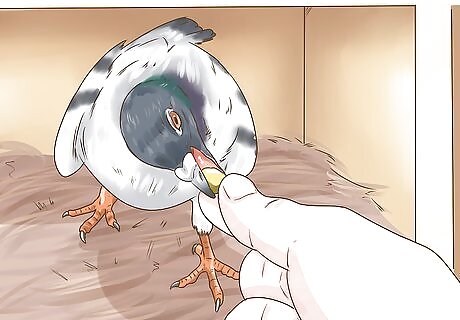
Feed the day before shipping for a short distance race. This is the day to feed for the race. On that afternoon if shipping is next day, feed all they want of a mixture of 20% barley, 70% European mix and 10% safflower/hemp/flaxseed.

On the day of shipping for a short race, feed 3/4 ounce per bird European mix in the am. Feed ¼ ounce per bird safflower/hemp/flaxseed about 1:00 pm. Never feed too late into the afternoon or they may dehydrate. Water is always fresh with nothing added day of shipping.
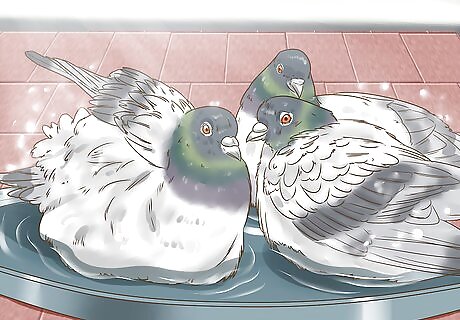
Give a warm bath on day of shipping about one hour after 1:00 pm feeding. The bath relaxes the birds and helps them stay calm all night on the truck, plus it brings on form. Skip the bath if rain is predicted.
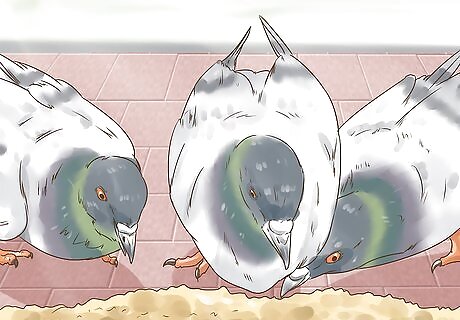
Feed on return. After short distance races, feed half European mix half depurative mix on day of return to build back reserves. Sunday through Wednesday 100 % depurative, Thursday morning 75% depurative, 25% European. Thursday afternoon, see the pre-shipping step above. On the day of return, one gallon of water must contain 1 tablespoon glucose, ¼ teaspoon vitamins and electrolytes (any brand made for chickens will do), ¼ teaspoon iodized salt along with a good friendly bacteria.
Seasonal preparation
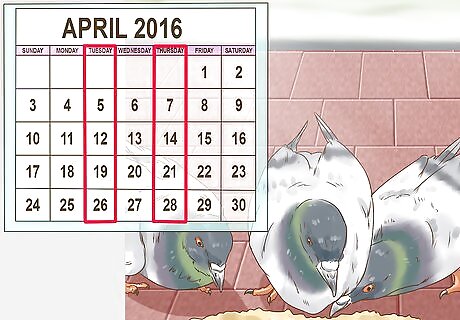
Feed Tuesdays and Thursdays all season. For one feeding mix one ½ to one tablespoon flaxseed oil (buy at health food store) on grain and add brewers yeast, Belgium pink minerals, whey protein natural or vanilla flavor and 1/8th teaspoon of iodized salt. Grit should be in front of pigeons at all times. Plus one little pot of Belgium pink minerals, one little pot of brown mineral block, one little pot of oyster shells and one pot of mixed commercial grit.

Follow this step for mid season if performance is falling off. Let the cocks come home and spend over night with the hens. The following week, bring in the hens 24 hours before shipping. Put in nest bowls and nesting material. Ship the cocks and let them spend over night with the hens when they return. Now, go back to regular widowhood. They will be in great form and mentally be ready again.
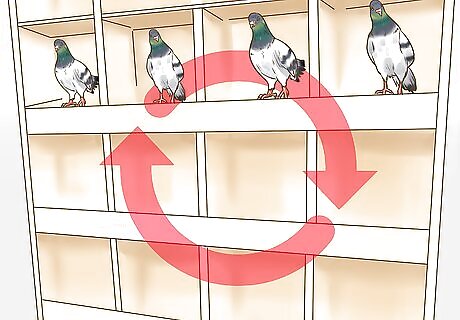
Keep changing things to keep pigeons fresh. Week three, put in only one really good hen before shipping. Week four, put in bowls for the first time. Week five nothing, just crate and ship. Week six add one strange cock to the widow loft for one hour before shipping. Week seven bring in hens 24 hours before, see above. Always have well fed hens waiting for cocks to return from race.Use the Widowhood System to Train Homing Pigeons Step 10.jpg
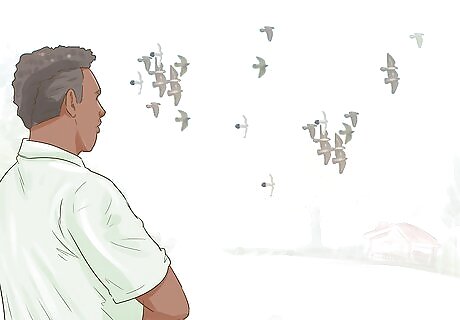
Keep the hens on wire and do not let them mate. Feed rich European mix the day the hens will see the cocks. You do not want them to think about eating when the cocks come home. Feed the widow hens barley five days per week. Not really heavy, keep them a little hungry. Treat hens with same medications at the same times as the cocks. Do not let them re-infect cocks. If hens mate up, do not use them for the cocks. No hen or sharing of a hen is better than a mated hen. Use stock hens that have been separated to add spark. Use yearling hens, they mate less.
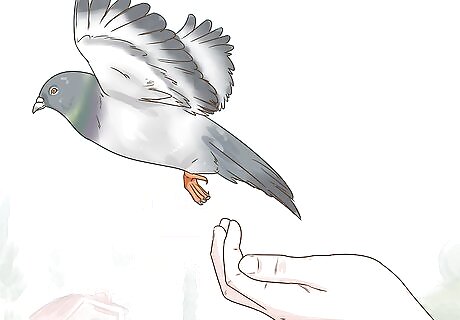
Ship cocks every other week from 300 miles on. Use your judgment on how they act. If they are acting great, then pool them.
Training

Let the cocks out to free exercise for an hour four to five mornings and two or more evenings per week. You can give a toss to cocks that did not race on the day of the race if needed. Toss one long toss (70 miles) mid-week for the first month of the race season. If they have raced 300 miles or above they can go two weeks without being raced or tossed. They will get all they need around the loft. Do not have the hens waiting when they return from a mid week toss. Seeing the hens too much causes a loss of form.

Keep calm. Do not go in loft while birds are resting. You must do all loft chores while they are out exercising. Widowers just eat, exercise and rest. This is the name of the game. No disturbances! The loft should be comfortable and warm. No open areas that cause the birds to fear something outside. Keep moisture out and dryness in by closing loft down on cold or rainy days.
Give medication. A good sound health program must be followed with canker and respiratory medications given every other week Sunday afternoon, Monday and Tuesday. Rotate the two and use different drugs each cycle. For example, rotate flagyl, ridzol and emtryl for canker. Rotate, suanovil and doxycycline for respiratory. Baycox for coccidiosis if needed or much dampness and rain is going on for an extended period. Using different drugs each cycle helps fight resistance to the drug. Worm the birds around week six or seven.




















Comments
0 comment